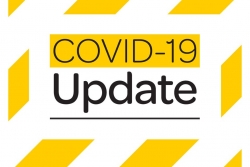NIWA (National Institute of Water and Atmospheric Research) is examining the ocean areas of Tairāwhiti and Hawke’s Bay. The aim is to assess the effects of Cyclone Gabrielle on fisheries habitats and seabed ecosystems.
Cyclones can drastically alter the marine environment. This includes an influx of silt from land to sea, increased ocean mixing, and sediment upheaval from the ocean floor.
Dr Daniel Leduc, the project leader, mentioned that while cyclones visibly damage land and properties, its influence on oceans is less obvious. He stated, “Post Cyclone Gabrielle, many houses were buried under sediment. Similarly, our marine environment faces such challenges, but it is difficult to chart due to the dynamics of water movements.”
The team at NIWA is focusing on evaluating these effects, especially in areas where marine species dwell close to the seabed.
To determine the sediment’s final resting place, NIWA is developing models. These models will incorporate data from satellite imagery, seafloor video footage, and sediment samples, gathered during sea voyages.
Earlier in April, NIWA concluded a 13-day mapping exercise of the seabed, using multibeam sonar. They aimed to identify sediment deposits resulting from the cyclone. This activity was followed by a 19-day sea voyage in June for additional data collection.
Encouragingly, Dr Leduc reported signs of marine life, like hermit crabs and juvenile shellfish, in the sediment samples.
However, Dr Joshu Mountjoy, a marine geologist with NIWA, said different seafloor areas have been impacted differently. He noted, “In some locations, sediment samples showed possible cyclone effects. In contrast, other areas showed minimal marine life but an abundance of wood debris.”
Fisheries New Zealand commissioned this study. The findings will assist in understanding the cyclone’s implications on local fisheries.
Simon Lawrence, Director of Science & Information, emphasised the need for this research. He said it’s crucial to comprehend the current underwater changes to make informed decisions for the future. He also mentioned that NIWA has scheduled another voyage in October to track the ongoing developments.

















































-660x440.jpg)












